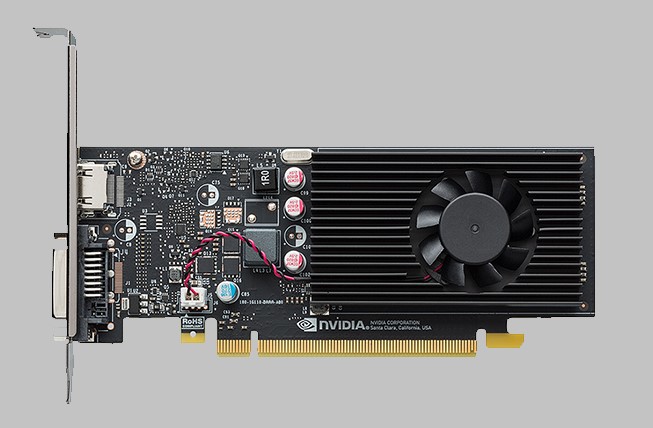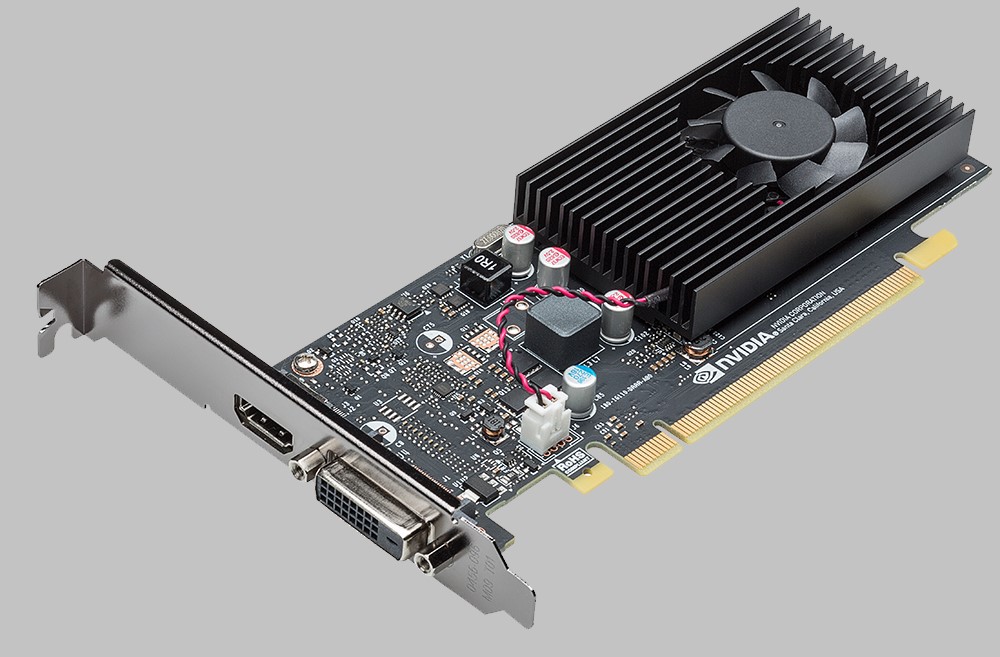Nvidia Reveals GT 1030 Reference Specs
Nvidia introduced the new GT 1030 cards last night with little fanfare. We got some quick announcements from Zotac and EVGA, the first add-in-card manufacturers to reveal GT 1030 products, but that was about it. Now the company has published its GT 1030 reference specs.
GT 1030 lacks access to many of Nvidia's latest-and-greatest features. Looking at the spec table is like listening to the GPU equivalent of "No" by Meghan Trainor. VR Ready? No. Nvidia Ansel? No. G-Sync? No. But that's to be expected from a budget card. Potential buyers are more likely to care about the GT 1030 supporting DirectX 12, the Vulkan API, OpenGL 4.5, and the usual assortment of Windows and Linux operating systems.
On the hardware side, the GT 1030's reference specs cement its place at the bottom of Nvidia's lineup. Its 384 CUDA cores have a 1,468MHz boost clock (a base clock was not provided) and the 2GB of memory is clocked at 3,000MHz. Nvidia said its reference design has a maximum GPU temperature of 97°C and draws 30W of power. The card is 4.72" tall, 6.68" long, and will occupy two slots when you fit it into your system.
Those specs mostly align with Zotac's GeForce GT 1030, which is a little smaller, and we wouldn't be surprised if EVGA's three GT 1030 cards are similarly specced. Nvidia didn't say whether or not it plans to offer a Founders Edition card for the GT 1030; it seems like it's just letting add-in-card companies offer custom graphics cards right out the gate.The company did provide images of the GT 1030 on its website, however.
For many, the GT 1030 will primarily compete with AMD's RX 550 cards. Nvidia's cards are a little cheaper--they're currently starting at around $70 on Newegg, while AMD's are starting at around $80--and powerful. The GT 1030's boost clock is 1,468MHz, remember, while the RX 550's is 1,183MHz. Nvidia's cards also require less power (30W instead of 50W) but their memory bandwidth (48GBps vs 112GBps) and memory interface width (64-bit to 128-bit) are also lower.
Again, that's comparing Nvidia's and AMD's reference specs, so individual cards are bound to differ. Right now it seems like Nvidia merely decided not to leave the budget end of the GPU market to AMD's new 500 series--just like how AMD's heading back to the high end with the announcement that its first Vega card will debut some time in June. (Surely the timing of these announcements was a coincidence, right?)
| Header Cell - Column 0 | Nvidia GT 1030 |
|---|---|
| CUDA Cores | 384 |
| Boost Clock | 1,468MHz |
| Memory | 2GB |
| Memory Interface Width | 64-bit |
| Memory Bandwidth | 48GBps |
| Memory Clock | 3,000MHz |
| PCI Express | 3.0 |
| Display Outputs | 1 x DisplayPort 1.2, 1.3, 1.41 x HDMI 2.01 x D-L-DVI |
| HDCP Support | Yes, 2.2 |
| Multi-Display Capability | Yes |
| Recommended Power Supply | 300W |
| Power Consumption | 30W |
| Power Input | N/A |
| DirectX | 12 |
| OpenGL | 4.5 |
| SLI | No |
| Supported OS | Windows 10 / 8 / 7LinuxFreeBSDx86 |
| Dimensions (HxL) | 4.72" x 6.68" |
| Slot Size | 2 |
Get Tom's Hardware's best news and in-depth reviews, straight to your inbox.

Nathaniel Mott is a freelance news and features writer for Tom's Hardware US, covering breaking news, security, and the silliest aspects of the tech industry.
-
Martell1977 So...nvidia skipped over the 1040? I'd have thought a 1040 would go against the 550 and if AMD brought out a 540 it would rival the 1030.Reply
Performance numbers will better tell how things stack up. -
zarcondeegrissom Not sure how the 2GB GT1030 will weigh in against the former 384 core GT730 cards with 4GB on them. It will be interesting to see ho the card weighs in with OpenGL desktop GUI stuff and silent fanless HTPC performance. For dead silent builds or 1U rack servers, there isn't much to choose from still without going way back to ATI radion 7000 AGP or S3 Savage cards.Reply

